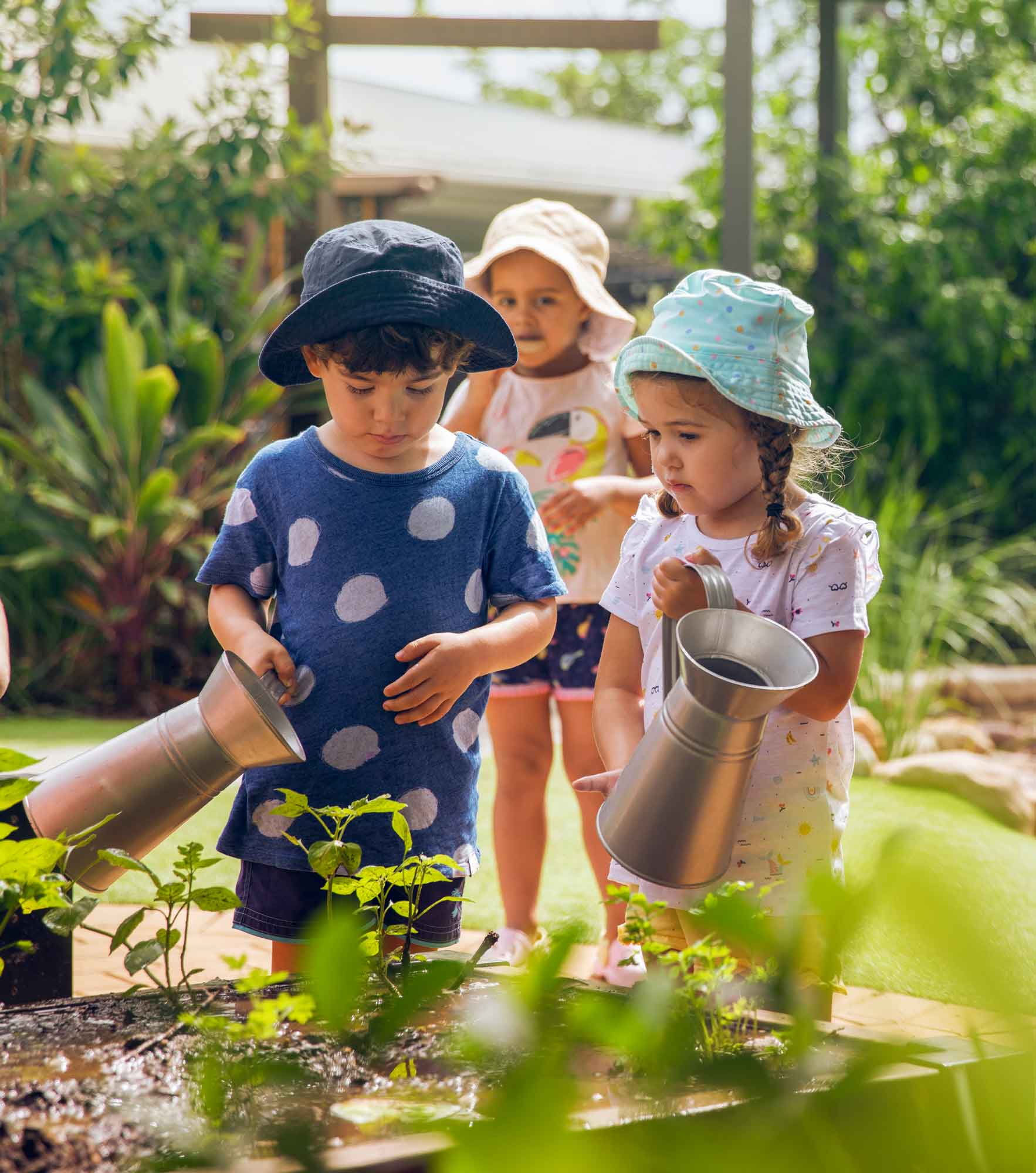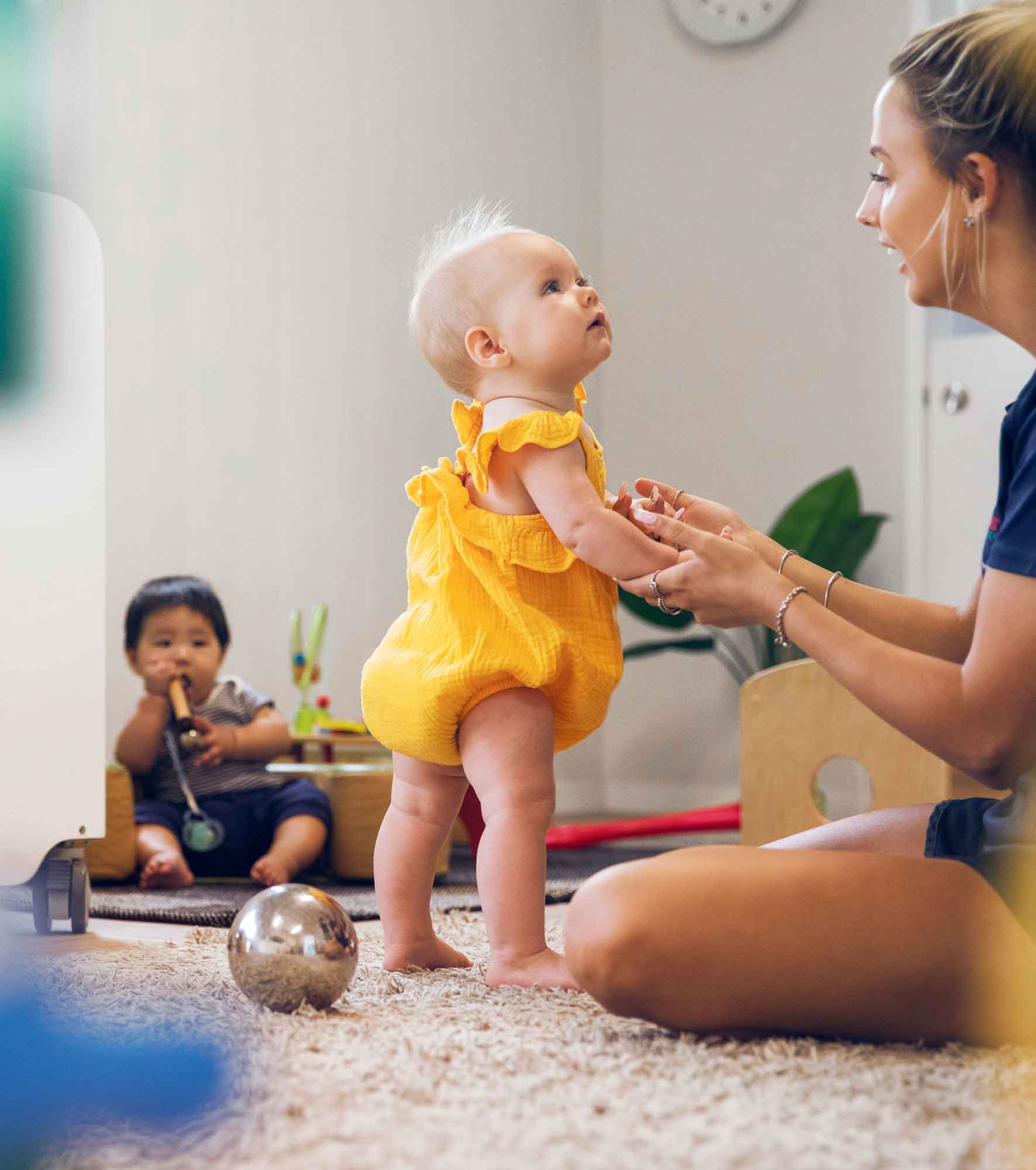Let’s play outside! An inside on Journey’s outdoor environments
Interview with Dan and Steve from Barefoot Projects
When Dan and his designer Steve talk about playgrounds, one thing becomes clear: they must have preserved their inner child because otherwise, they couldn’t create such beautiful outdoor spaces as we can see in our Journey Centres. At the same time, they are exactly what you would expect from playground equipment: solid and grounded. When it comes to safety, they believe that more is simply better. If regulations require, let’s say, a 1-metre safety measure, they add an extra ten centimetres. Just to be on the safe side. Dan is the director of Barefoot Projects, a landscape construction company, and Steve is one of his designers. Both have worked on various projects for Journey’s outdoor spaces lately.
From green grass to building children’s dreams
Dan grew his success with grass. Often, he would deliver grass to construction sites where a play area was being built. As the grass is always greener on the other side and because Dan is not one to do things halfway, he ventured into this field with time and found his passion here. And now, you can get everything from him. The grass below and a climbing tower with a slide above, and everything else that’s needed to have a fun-filled outdoor area. A team of 25 employees, including two designers, work for him—a big team that is necessary for all the projects they complete.
Outdoor spaces now and then
When Dan and Steve reminisce about their childhood, they remember spending a lot of time outdoors rather than “mostly indoors in front of a screen”, which is often the case today. Back then, playgrounds were mostly concrete areas with a sandbox, which was not particularly inspiring. Climbing trees were more interesting. Perhaps that explains their preference for natural materials.
Looking back, they see how much playgrounds have changed over the years. Both have children themselves, so they don’t need to actively do research; they somehow naturally find themselves on playgrounds designed by others. It’s not that they need inspiration; it’s more about how different things are accepted by children.
That, of course, varies greatly. “You always have the very active children, who you usually find on the climbing elements, and then you have those who prefer a quieter environment. For them, it’s wonderful to sit in a teepee with their friends and play there. We always ensure that there are at least two ways to access an area, such as a climbing wall and a ladder, for example. This way, we cater to all children and make sure that all areas are easily accessible for educators,” explains Steve.
“Journey has a good mix”
But it’s not just the children who are different; the customers are too, adds Dan. When asked to describe what makes Journey’s customers unique, he has no trouble putting it into words: Journey, in his opinion, has a good mix. We love water play, open spaces, and, if possible, sports fields. We always have a central element, which is usually a climbing tower, and when it comes to creativity, the sky is the limit. From ships to treehouses, everything is thinkable and doable here. And, as Dan says, we’re not afraid to incorporate the “cool stuff: as well. So sometimes we have swings where other customers would be too cautious, as a child might get swung around in the heat of the moment. Here, Steve’s task is to find the right place for everything. This is minimising risks while ensuring that fun is not compromised in the end.
The voice of our children
And yes, it’s also Journey’s approach to design outdoor areas that are appropriately challenging for different age groups. They have more trust in children’s abilities here than elsewhere. This is mainly based on feedback from children and observations from their educators, which are incorporated into the design. Because an important aspect of everything we do at Journey is that children’s voices are heard. To ensure that happens, each new project involves intensive exchanges beforehand; it is a matter of personal involvement for Journey, as Dan reports about intense discussions with Anthony during the planning process.
But how exactly does one plan a wonderful Journey outdoor area?

The space available determines many things. Steve examines the existing space and first determines the location for the central elements: the fort and the water play area. If there is enough space, he also includes sports fields, exploring trails for our little explorers, or even a bike path and other elements. The imagination knows no bounds, and each project is unique. Also, shading is very important. Journey usually provides more shading than required. After all, they want to make the most of the outdoor areas. As for materials, Steve plans a combination of natural materials and durable alternatives for us. As beautiful as wood is, it requires maintenance and care. But Journey has found a good balance, according to Dan.
Then there are these little things that we often don’t think about when we, who are not experts, look at an outdoor area. Plants should not only be beautiful and robust but also non-toxic. Any potential hand- or foot-trapping hazards are avoided at all costs. Surfaces that could become hot should always be in the shade. Areas with bark and sand should be kept separate so that they can be easily cleaned up with a leaf blower in the evening without everything getting mixed up. For the little ones, flowers may even be placed in raised beds because, as both know, everything within reach will end up in their mouths, including bark. Although it’s not harmful, what our Future Foodies offer is much more delicious and nutritious.
A rewarding task
Often, the two don’t even see the success of their work. The children only come and use their creations when they are finished with their work and back on their desks, planning the next project. That’s why feedback from Journey is so important for planning future projects. But, as the two say, when they work in centres that are already open, they are usually an attraction for the children. They observe everything very closely and can hardly wait to discover the newly designed areas. And that, they say, is truly fantastic and rewarding.
Play-Based Approach of Outdoor Spaces
There are various tools on a playground that can support different types of learning in children. Here are some examples:
Swings and slides: Swings and slides can help children develop their gross motor skills, balance, and coordination. As children learn to climb up the ladder and slide down or pump their legs on a swing, they develop their strength, spatial awareness, and balance.
Climbing structures: Climbing structures such as climbing walls, cargo nets, and monkey bars can help children develop their upper body strength, grip, and coordination. As children climb and navigate through these structures, they learn to control their movements, assess risks, and problem-solve.
Sandboxes: Sandboxes can provide opportunities for children to engage in sensory play, promoting their cognitive development. Playing with sand can help children develop their fine motor skills, creativity, and imagination.
Water play: Water play features such as splash pads, fountains, and water tables can help children develop their scientific understanding of cause and effect as they observe the movement and properties of water. Water play can also support children’s social development as they collaborate and communicate with their peers during water play.
Imaginative play areas: Areas designed for imaginative play, such as playhouses or themed play areas, can support children’s social and emotional development. By engaging in pretend play, children learn to express their emotions, develop empathy, and practice social skills.
Playground tools and features can support various types of learning in children, from physical development to cognitive, social, and emotional development. By providing a diverse range of tools, playgrounds can cater to different learning styles and help children develop holistically. If you want to know how to improve your own garden, we have a few inspirations for you.




